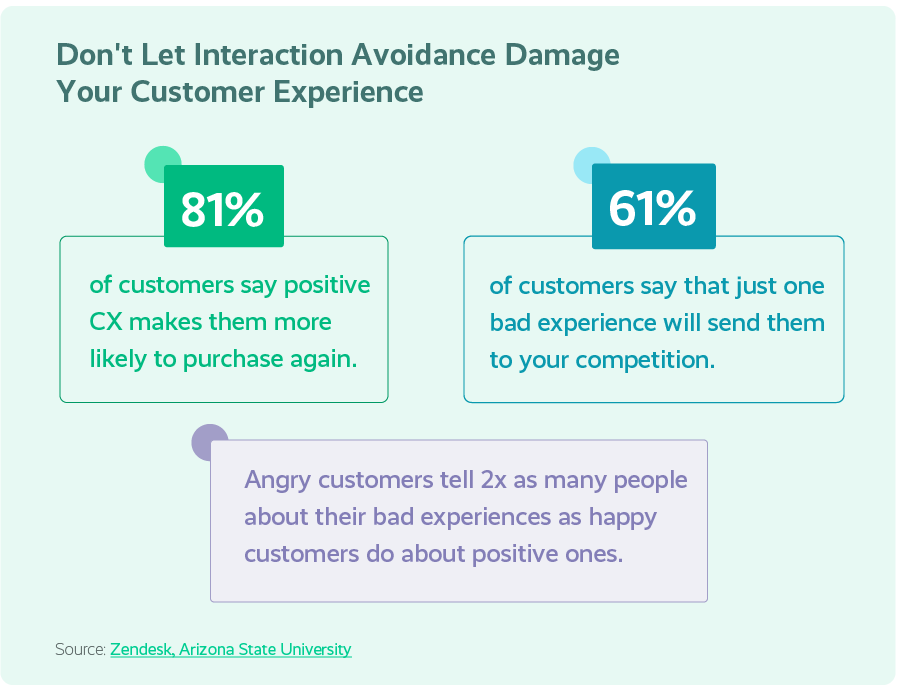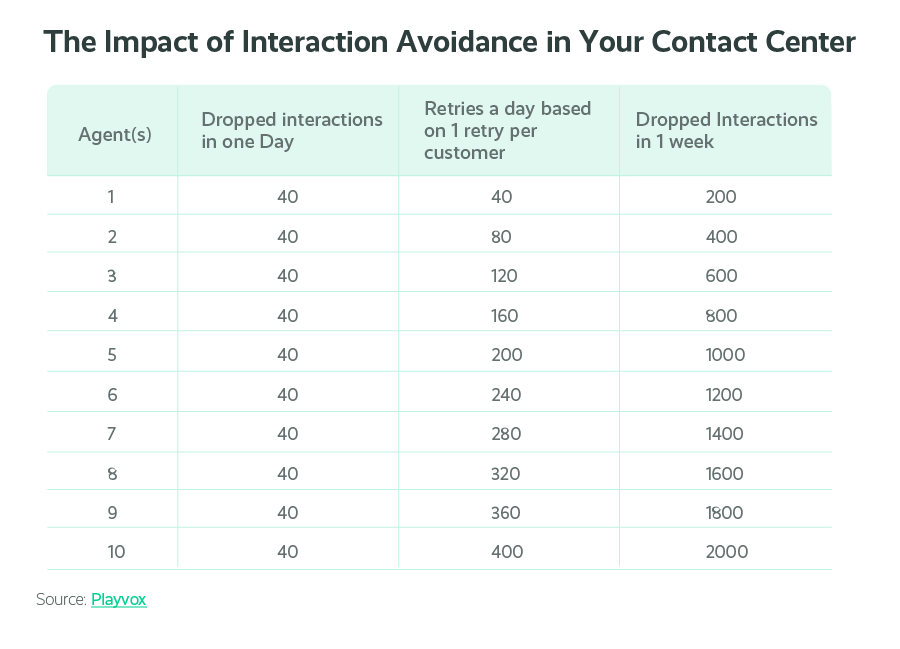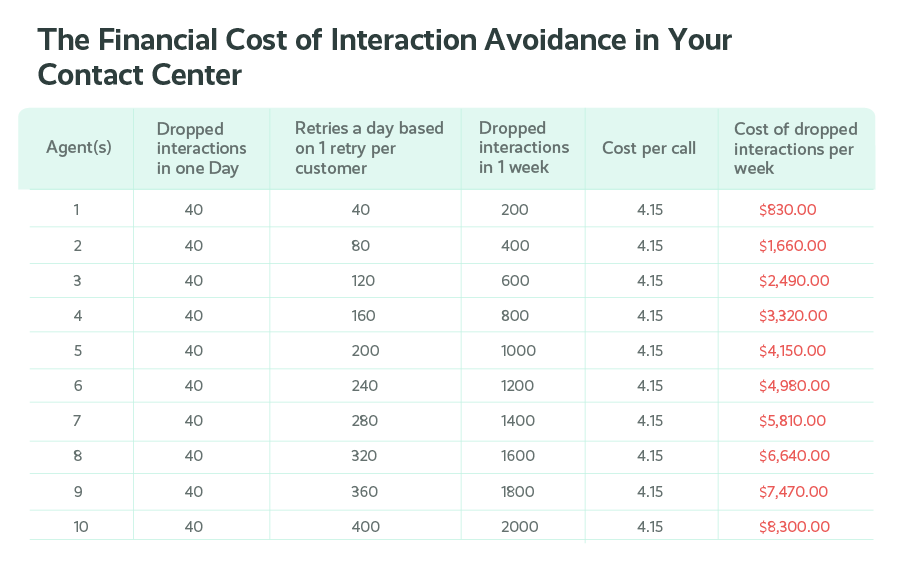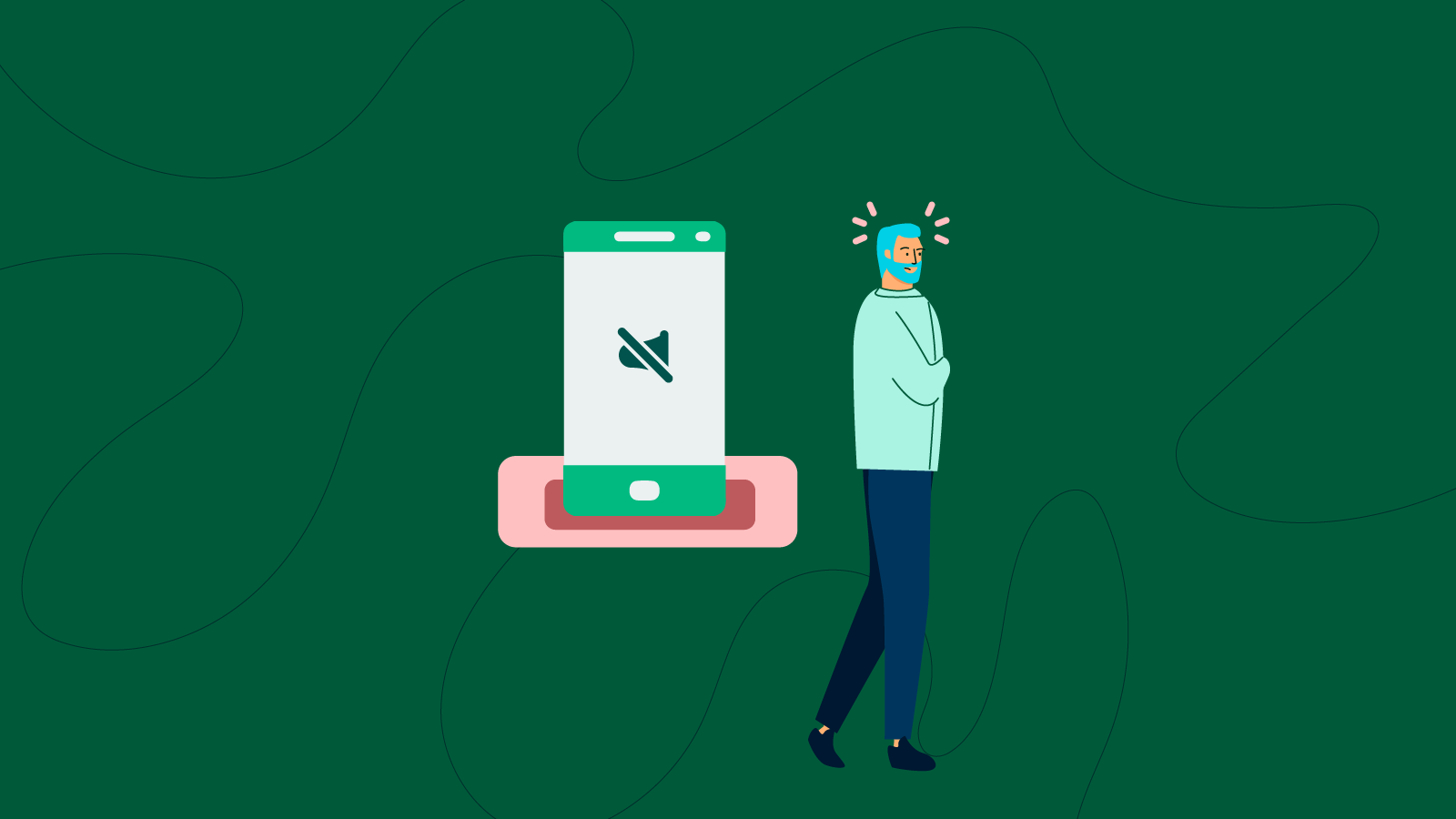How to Control Call Avoidance and Interaction Avoidance
During my career in workforce management, call avoidance was always an issue — regardless of the location of the business, the nature of the business, or the location of the agent.
Call avoidance, now known as interaction avoidance, denotes the steps an agent takes to avoid handling a customer interaction.
It can take time and resources to determine whether actual interaction avoidance has taken place, but, ultimately, identifying instances of interaction avoidance can save your company money.

What Is Interaction Avoidance?
Before the digital era, interaction avoidance primarily centered on call avoidance. But now that tickets, emails, and chat have entered the picture, interaction avoidance encompasses any effort contact center agents make to bypass working with customers in any channel.
What does that look like day to day in your contact center? Avoidance tactics include:
- Disconnecting the customer interaction prior to greeting or resolution
- Transferring a customer to another department unnecessarily
- Switching codes rapidly within a few seconds to put themselves at the back of the line for the next interaction
- Claiming IT issues with their systems
- Staying in an aftercall or wrap-up time toward the end of the shift to avoid any further interactions
- Calling their own phone, family, or friends or handling personal issues when doing “outbound” work
- Taking unnecessary, unauthorized, or excessive breaks
While some might only see this as an agent behavior issue, the truth is, it’s a broad problem with a significant impact on the business. It has negative implications on your customer experience, forecasting, scheduling, and overall budget.
Related Article: 17 Most Effective KPIs To Evaluate Customer Service Performance
The Effects of Interaction Avoidance on Customer Experience
When a customer has an issue that can’t be solved by self-service, they, of course, employ the most convenient means to contact your business to have their issue addressed by an agent.
Now, what happens if they’re disconnected before interacting with an agent or before a resolution is found?
They call back or restart their digital interaction to try again, and when they do reach an agent, they’re likely starting out the conversation feeling upset. This frustrating process of trying to get help again and again results in a negative customer experience — and that’s as bad for your bottom line as the direct costs we’ll address later.

Globally, Zendesk reports that 81% of customers said a positive customer experience makes them more likely to purchase from a company again. But a negative one will make them turn toward your competition — 61% said they would switch after a single poor experience.
And because angry customers tell twice as many people about their bad experience as satisfied customers do, your brand can suffer whenever interaction avoidance occurs. The impact is far-reaching and negatively impacts other areas of your business as well.
Related Article: Why You Need to Measure Customer Experience in Your Contact Center
How Interaction Avoidance Impacts Forecasting and Scheduling
Have you ever struggled to determine what caused an unexpected increase in volume or a decrease in service level? You probably started by checking past forecasted arrival patterns, current schedules, current scheduled lunches/breaks, shrinkage, call-outs – the list goes on.
Once you’ve run the gamut of possibilities and you still come up empty-handed, it’s time to review agent data to determine if agent behavior caused the unexpected spike in volume.
Many times, this extra step is overlooked due to the amount of research it takes. But this is an important component in identifying and resolving issues with volume and service levels. It can also tell you if you have a problem with a handful of agents or if your issue is more widespread.
If only one person is practicing interaction avoidance, the impact is fairly small. But in my experience, once one agent has found a way around interactions, others soon follow suit. This exacerbates the issue by orders of magnitude.
To better understand the impact of interaction avoidance, refer to the chart below.

As you can see from the chart above, the more agents who are practicing interaction avoidance, the more negative experiences your customers can have. In turn, you’ll likely see undesirable feedback increasing when you analyze customer sentiment.
Your service level and other KPIs are affected as well. The overarching impact on your business is that interaction avoidance falsely increases your forecast variance because there’s an anomaly in your forecasted interaction volume.
Ultimately, this impacts your future scheduling and forecasting as you try to staff for those higher volumes, creating unnecessary labor costs. Even more effort is wasted by researching the root cause of the unexpected spike in volume. Closely monitoring for signs of interaction avoidance and addressing them quickly helps you avoid these costs.
Related Article: 3 Tips For Optimizing Your Contact Center Schedule
The High Financial Cost of Interaction Avoidance
When you review the cost per call related to dropped interactions, you can see the negative monetary impact on the business. According to CXToday, the average cost per call is $2.70 – $5.60.
To keep things simple, we’ll use the average cost of $4.15 per call. Refer to the chart below to see the financial impact in just one week.

As seen in the chart above, interaction avoidance isn’t just a bad customer experience. It costs the company money and resources.
The more agents that practice interaction avoidance, the more your operational costs rise, negatively affecting your bottom line. In just one week, 10 agents dropping an average of 40 interactions per day can cost as much as $8,300 per week.
Other costs stemming from avoidance include contracted payout fees in your service level agreements. If service level or speed of answer minimums are not met, you may need to hire more agents and spend money on overtime costs.
When some agents avoid working with customers, that puts pressure on other team members to pick up the slack. This can lead to burnout, creating additional increases in agent stress that lead to high call-outs or high attrition rates.
Related Article: How Contact Center Agent Burnout Decreases Productivity (And What You Can Do About It)
What To Do if Contact Center Agents Are Participating in Interaction Avoidance
The simple fact is that some agents do avoid interactions, though their reasons for doing it can vary. Here are a few tips you can use to quickly spot this behavior:
- Review Average Handle Time (AHT) or First Answer Handle Time (FAHT). Identify agents with the lowest AHT/FAHT. This could be a sign of interaction avoidance. Tip: If an agent has the lowest AHT/FAHT without any sign of interaction avoidance, look for best practices to share with the team. You can even motivate agents with a leaderboard for those KPIs.
- Review KPIs. Review how many interactions an agent has in a single day and compare this figure with the peer norm. Tip: If the agent is legitimately working more interactions than their peers, use their techniques as examples for the rest of the team and consider updating your training to include these tactics.
- Review the recording/transcript of the interactions. Determine if the customer abandoned the interaction or if agent interaction avoidance was at play.
- Review adherence. If an agent is taking unscheduled breaks to avoid interactions, it should show in adherence metrics, depending on how your activities are mapped in your contact center solution.
Why an Agent Might Be Avoiding Interactions
It is important to review all applicable data – including telephony reports, reports from your workforce management program, and recordings from your quality management program – if you feel interaction avoidance is taking place.
It’s also important to have these resources available so you can have the appropriate conversations when you accurately identify interaction avoidance.
Lastly, ensure the agent in question has a chance to explain. There could be very good reasons for shortened or dropped interactions.
- Additional breaks could mean the agent requires a work accommodation, but they’re not aware of how to request one.
- Short handle time could mean the agent just needs more training on a process to do it correctly.
- If the agent is having IT issues, verify it has been reported so the agent has the proper tools they need to do their work.
The right workforce engagement management solution will help you train, coach, and motivate agents to reduce interaction avoidance and help them stay on the right track. But remember that your solution only paints a partial picture of what is happening or could be happening — strong communication with your agents is a vital piece of the puzzle.
Related Article: What is Workforce Engagement Management? (And Why it Matters)
Stop Interaction Avoidance in its Tracks
Interaction avoidance is a costly problem in your business, but with proper quality management practices in place, you can keep it under control. You’ll also want a strong interaction avoidance template that outlines what your service center considers avoidance and the consequences for exceeding the limits.
For more on interaction avoidance policies and a free policy template, review our new ebook, Combatting Call Avoidance And Creating The Right Policy To Manage It.







